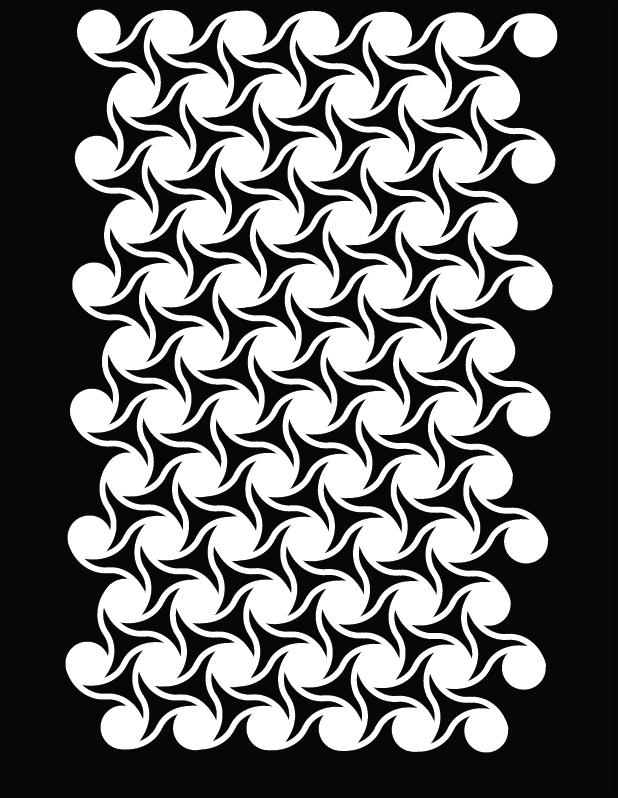Material Selection
First, select the "Base Materials" needed to create the NPR structures.Paper
Although paper is relatively inelastic and subject to tearing, it is cheaper and easy to work with than rubber or plastic. As such, all prototype designs were first cut out of printer paper, which gave a rough idea of the designs' properties.
Gum Rubber
Promising prototype designs were laser cut through 1/16" Gum Rubber sheets purchased at the Hoffmeyer company. Gum Rubber was chosen over synthetic rubbers since synthetic rubbers emit poison gases when melted by the Laser Cutter (See "LASER SERIES: Laser Cutting and Etching Safety and Basic Use" [3]). Unfortunately the Gum Rubber became tacky when cut. This is mitigated somewhat by washing the material in soap and water after cutting.
Using Prototype Designs to Determine Manufacturing Parameters
Second, construct prototypes "by hand". This allowed better visualization of the structure and better determination of manufacturing parameters.
Prototype 1: Rectangularly Tiled Bowties
A single Rectangularly bounded Bowtie cell can be constructed by hand by folding the paper appropriately and making 4 scissor cuts. As shown below, this design shows that the bowtie pattern corners twist when stretched. This torsion is transmitted across the entire upper member, causing the "top strut" (the vertical piece) to buckle "outwards". One way to mitigate this effect is to make the "V" parts of the bowtie narrower and the strut wider. This reduces the amount of torsion the upper member can deliver and also makes the strut stiffer and less amenable to buckling. Strut width was made an explicit mask generation parameter.
Prototype 2: Hexagonally Tiled Triangles
Inspired by the video below on the left (From University of Sheffield, UK (2004) Fabrizio Scarpa f.scarpa@bris.ac.uk, Mohd Roshdi Hassan morhas@eng.upm.edu.my) I created several masks in Adobe Illustrator and printed them in jpg format in order to better visualize the geometry and the parameters necessary for the hexagonal mask generator. One of the designs is shown at the below right. The designs' base pattern was a distorted triangle. From it, I was able to determine the design's repeating rectangular "cell" and its parameters (table below) assuming a hexagonal tiling with unit sides. Starting with triangle "a" centered in the top left corner and rotated 30 degrees, I placed 11 more copies of the triangle centered at the "X" and "Y" shown and rotated the indicated theta degrees. The rectangle holding these 12 triangles can then be tiled down and across the page.

| Corner | X | Y | Theta (Degrees) | Theta (Radians) |
| o a | 0 | 0 | 30 | 1 pi/6 |
| o b | sqrt(3)/2 | 1/2 | 90 | 3 pi/6 |
| o c | sqrt(3)/2 | 3/2 | 150 | 5 pi/6 |
| o d | 0 | 2 | 210 | 7 pi/6 |
| o e | 0 | 3 | 270 | 9 pi/6 |
| o f | sqrt(3)/2 | 7/2 | 330 | 11 pi/6 |
| o g | sqrt(3)/2 | 9/2 | 30 | 1 pi/6 |
| o h | 0 | 5 | 90 | 3 pi/6 |
| o i | 0 | 6 | 150 | 5 pi/6 |
| o j | sqrt(3)/2 | 13/2 | 210 | 7 pi/6 |
| o k | sqrt(3)/2 | 15/2 | 270 | 9 pi/6 |
| o L | 0 | 8 | 330 | 11 pi/6 |